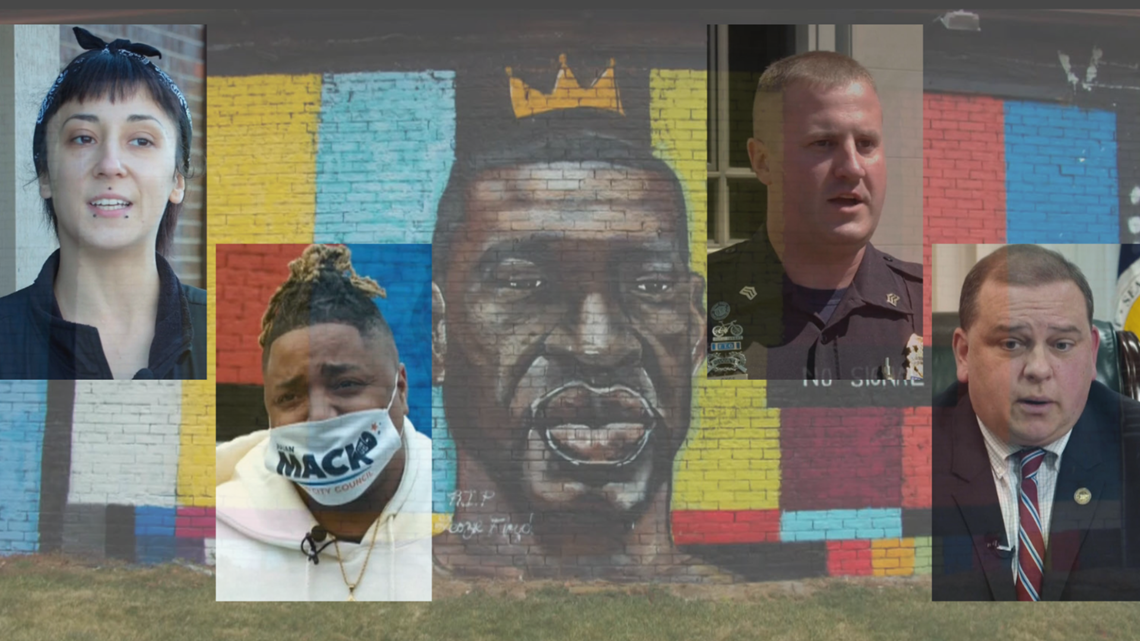6 months after Toledo's George Floyd protest turned violent, what has changed?
Promises to mend racial divisions were made and some wounds are healing, but where does the city stand since that May night? Protesters and law enforcement reflect.
WTOL
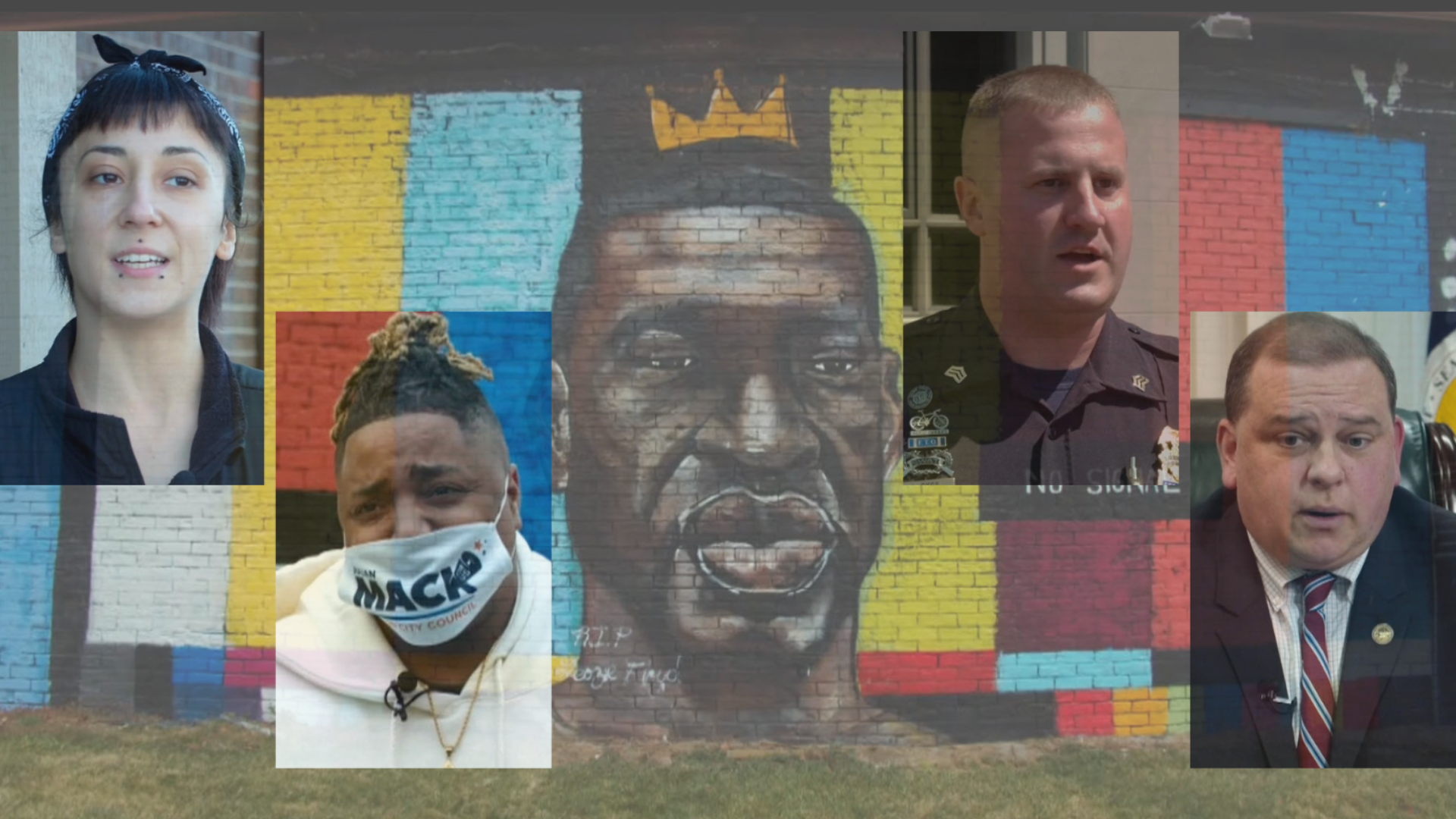
Saray Pratt appears from inside her apartment building, apologizes for being late, and shivers in the early December cold.
"Wow, I didn't realize it was so cold," she says.
She turns and heads slowly down the sidewalk, being careful not to slip on the dusting of snow covering her path. Her left leg doesn't move as easily as her right. Pratt has a discernible limp, caused partly by the steel rod in her tibia but also because nerve damage makes it difficult to feel her toes.
She has been healing for six months, ever since a wooden projectile fired by a Toledo police officer shattered her leg as she was holding a sign in front of The Attic at the corner of Adams and 17th Street.
Other wounds may never heal.
"Emotionally, it's been harder than the physical," she says, stopping to compose herself and to wipe away tears streaking down her cheek.
She quickly shakes her head when she's asked about forgiveness of the officer.
"Absolutely not. For someone to commit that type of act, do they need to be forgiven?"

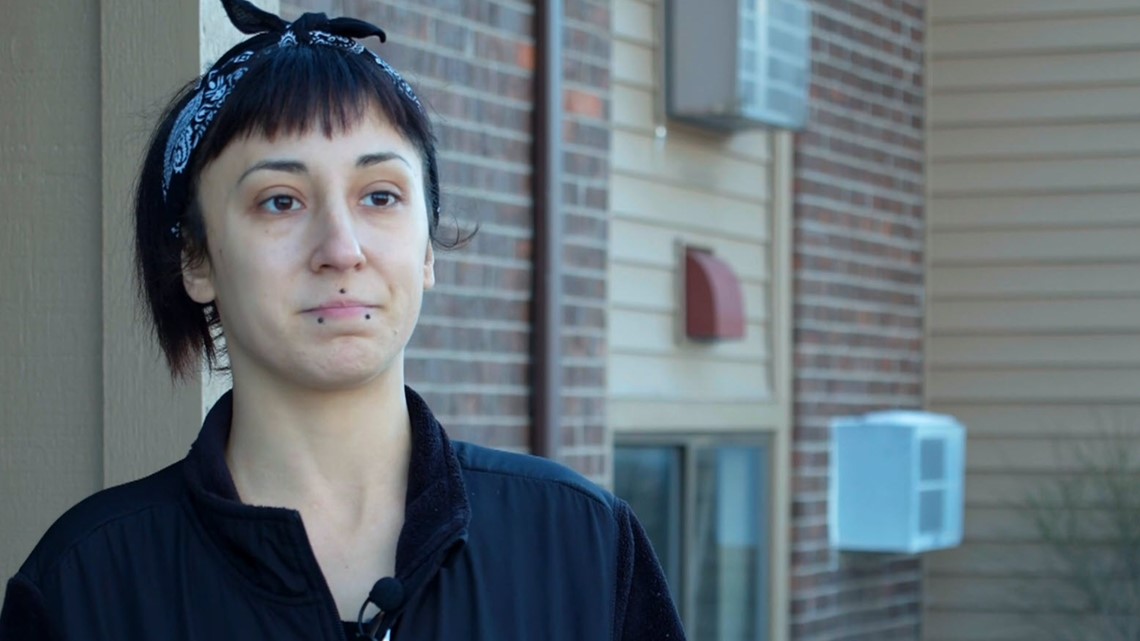
RELATED: Six months later | Stories from Toledo protesters who marched in wake of George Floyd's death
Standing Together for George Floyd Standing Together for George Floyd Subtitle here
On May 25, a Minneapolis convenience store clerk called police, alleging that George Floyd had just attempted to pass a counterfeit $20 bill.
Four officers responded and at one point, Floyd was pinned to the ground, with Derek Chauvin kneeling on the neck of the 46-year-old black man. He died in custody and the four officers are now awaiting trial for his death.
The outrage around the country was almost immediate. Rallies and protests against police brutality and systemic racism popped up in city after city. In Toledo, multiple protests were planned for Saturday, May 30.
Around noon on that day, dozens, if not hundreds, of Toledoans lined Secor Road. In an inspiring show of unity, whites stood alongside their black neighbors, holding signs and cheering when motorists honked horns in support.
Later in the afternoon, many of those protesters joined a larger crowd gathered at the intersection of Jackson and North Erie in downtown Toledo. Speakers preached calm but urged the crowd to demand police reforms.

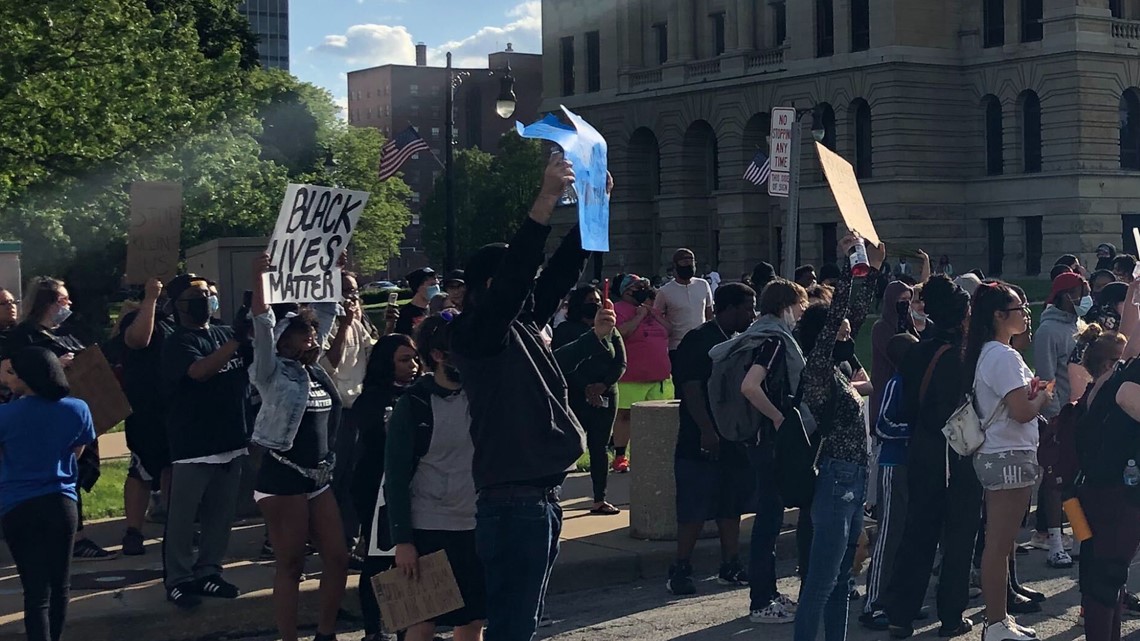
As the speeches continued, a protester, with his face covered by a scarf and carrying an assault rifle, floated in and out of the crowd.
Among the large group was Toledo Mayor Wade Kapszukiewicz, who was on hand to hear the concerns of his community.
At 4:11, the mayor sent Toledo Police Chief George Kral a text message: "I'm here at the rally downtown. Other than overtaking the intersection, which they probably technically weren't allowed to do, everything here is fine. A lot of strong language from the people giving speeches, but no violence whatsoever. Everyone is being respectful and orderly."
Fifteen minutes later, the mayor sent another text: "Actually, I'm just looking around at the crowd, and I spotted a dude in full camouflage holding an AK-47."
"We are watching him. There are two, actually," the chief responded.
Descent into Chaos Descent into Chaos

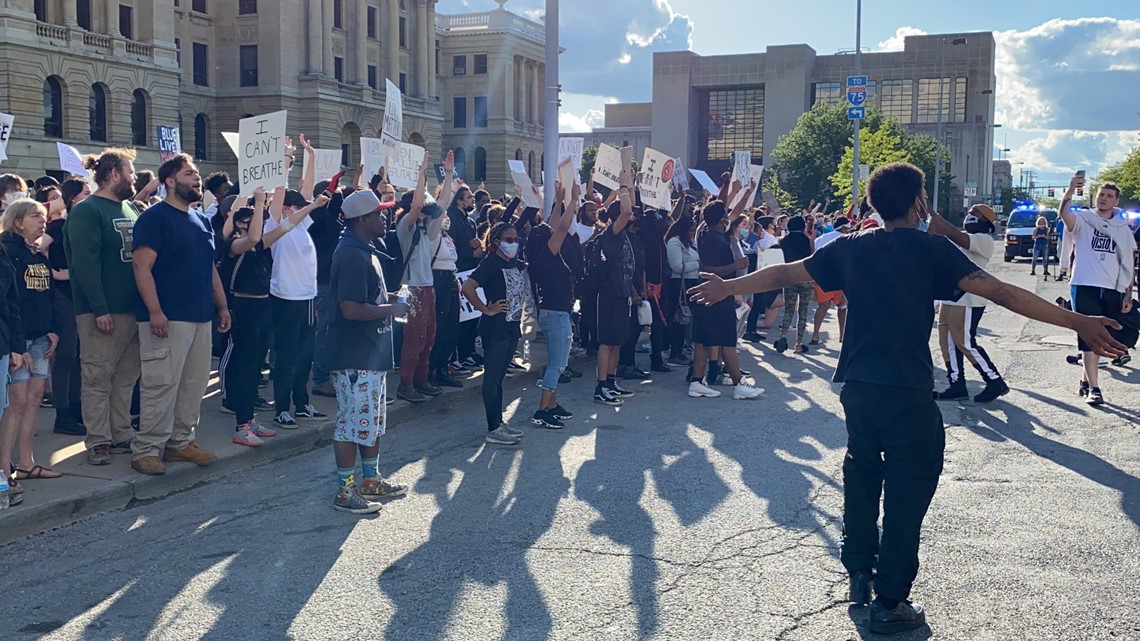
Multiple community leaders and pastors were downtown in the late afternoon hours, attempting to keep tensions from boiling over. But those efforts began unraveling a little after 4:30.
A police vehicle positioned to protect demonstrators on Cherry and Spielbusch began getting surrounded by the crowd.
"They are getting kind of hostile," an officer reported on his radio. "Got a crowd around us if you want to send another crew."

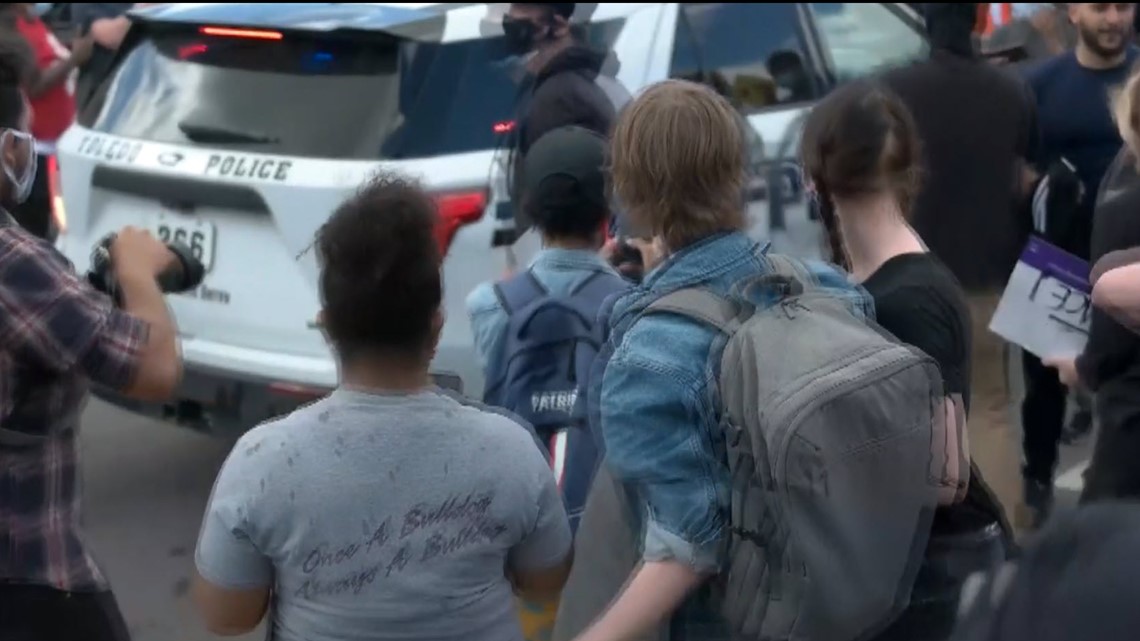
And then, moments later: "We are going to need a lot of crews down here. They are getting around our car."
A widely circulated video showed a partially masked white man pull a can of spray paint from a backpack and, as a young black woman attempted to stop him, began to spray paint the back of the police vehicle.

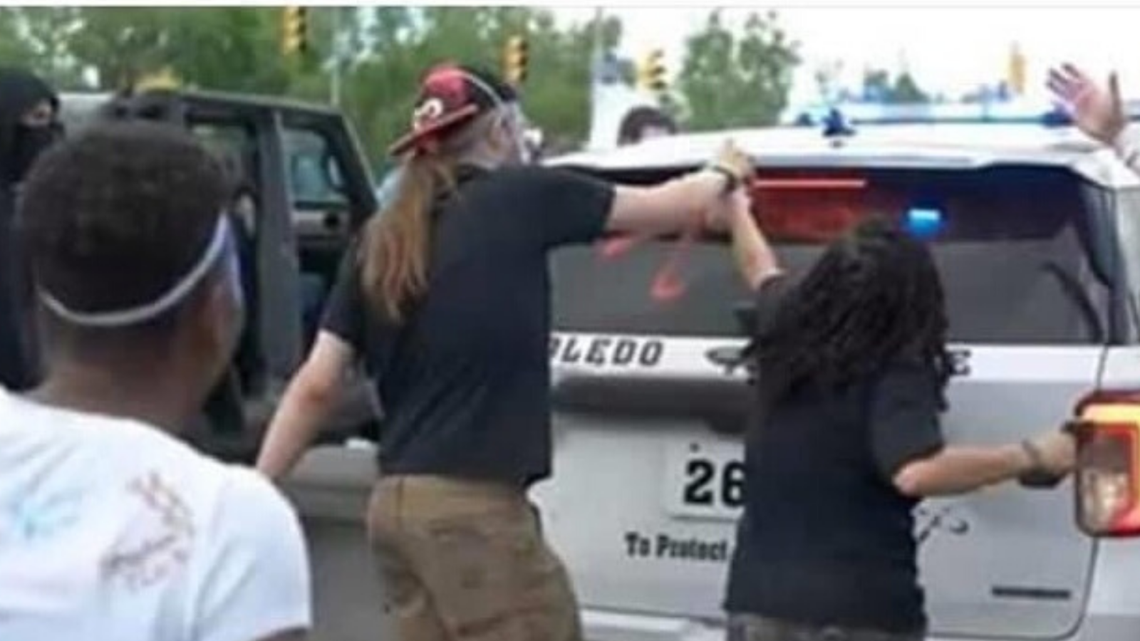
At 4:44, Chief Kral fired off two text messages to the mayor: "Crews are surrounded." "Going to have to resort to gas."
Canisters of gas began sailing through the air and exploding on the ground, causing protesters and onlookers to scatter.
Sgt. Joe Okos, a 14-year police veteran, was monitoring the situation from home. He headed downtown to help.
"I had the radio on and I heard the initial situation at Cherry, where they had the vehicle surrounded and there was the first deployment of gas. I got into the building and got my body armor on and my gun belt."
Community activist Julian Mack had briefly gone home after listening to some of the downtown speeches. He returned to pandemonium, gas rising into the air and police crews forming lines to protect the safety building.
"When I came back downtown, the entire downtown smelled like gas," he says.

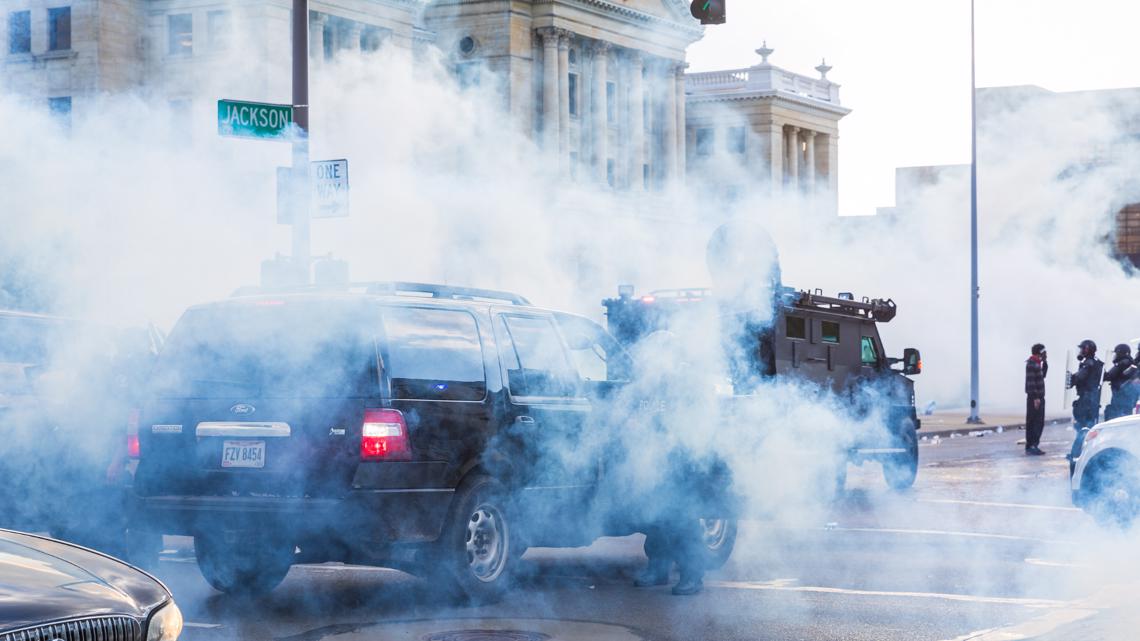
Toledoan Shareen Strozier tried to navigate the chaotic streets, her kids in the back seat. "I was scared. I was mortified. I was surprised."
Within minutes, the city erupted. Protectors were forced to battle those they had sworn to protect. The crowd's rage grew with each canister of gas.
RECORDED LIVE | Protesters clash with Toledo police (viewer discretion advised)
Violence on Adams Violence on Adams
At around 5:30, a social media video from an apartment complex near Franklin and Adams captures Kashawn Hines-Hamilton going airborne to tackle a female lieutenant as she attempts to make an arrest.
A large scrum breaks out and Officer Melvin Russell can be seen in a separate video hitting a protester with his helmet, while Officer Jeffrey Breeze punches a man on the ground. Both men are later suspended and Hines-Hamilton pleads guilty to assault.

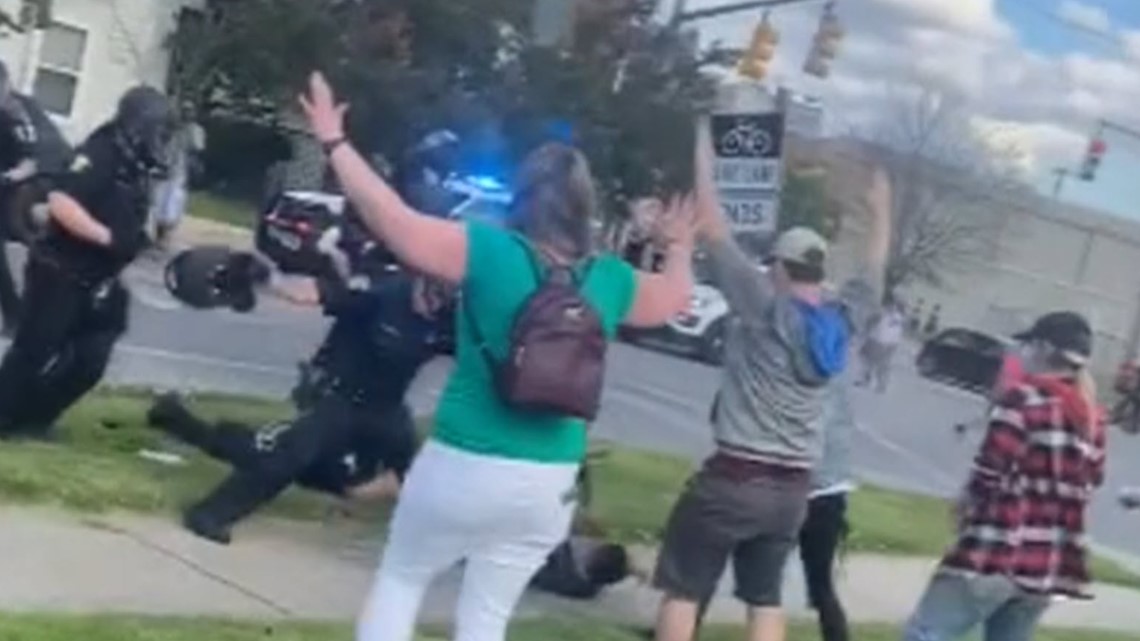
RELATED: History of misconduct trails 2 of 3 Toledo officers disciplined for actions at May 30 protest
A short distance away, Saray Pratt stands near The Attic bar, at the corner of 17th and Adams. She is holding a sign that says. "George Floyd, rest in peace. I can't breathe. FTP." She curses at officers passing by.
Around 6:30, a command comes over the police radio: "1201 to 1104. Go ahead. Can you move the BearCat to Adams and 17th?"
A BearCat is an armored personnel carrier used by military and law enforcement.
Pratt says she made eye contact with the passenger in the BearCat as it approached her intersection. She says that in the next moment that passenger yelled up to a mounted officer who was firing wooden bullets into the crowd.

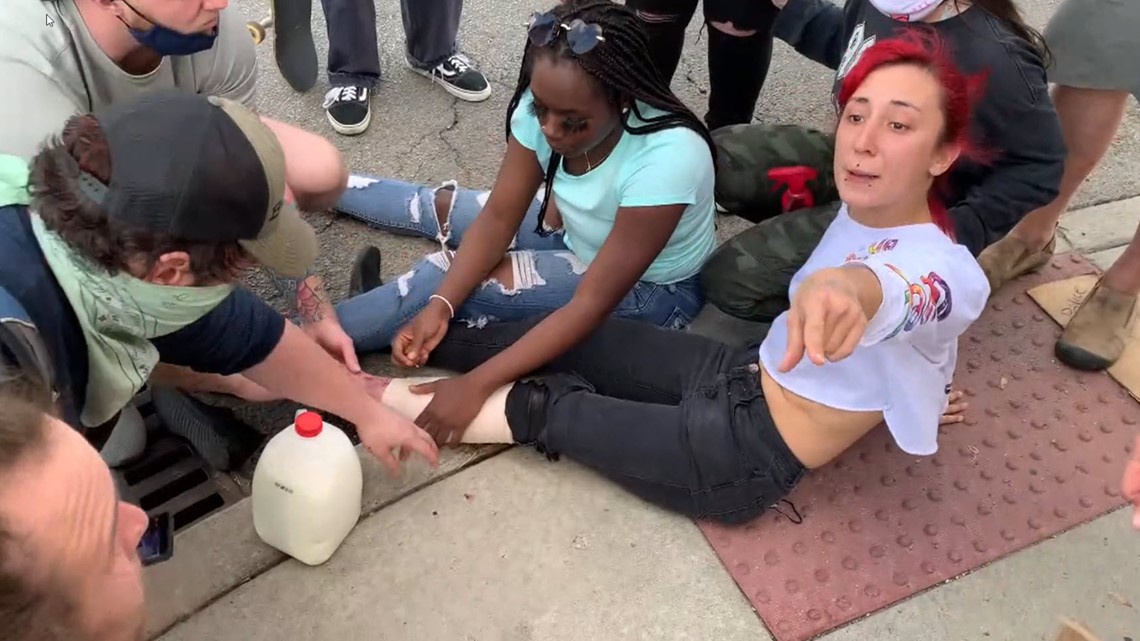
She says the memories caused her to move from the area.
"I don't want to be near downtown. I don't want to see multiple police cars a day and not know whether it is the officer who shot me, because I have yet to know that."
But the violence wasn't one-sided. For hours, the city's police were cursed at, spit at. At times, rocks and bottles filled with unknown substances were thrown at officers.

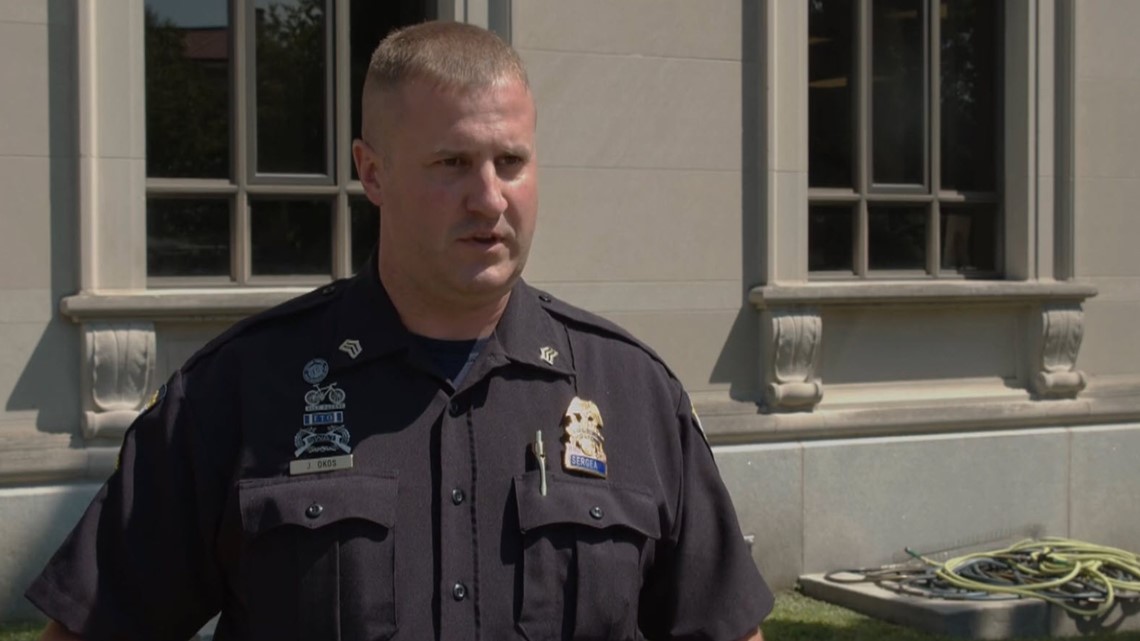
"You're allowed to call us whatever you want. We get called vile things," Sergeant Okos says. "Finally, at a point, someone started throwing incendiary devices. They were throwing mortar rounds into the crowd. Once those started going off, for the good of everyone involved, we were given the order to push forward and break the crowd up."
Throughout the night, windows were broken and multiple buildings were damaged across the city. Eventually, peace returned.

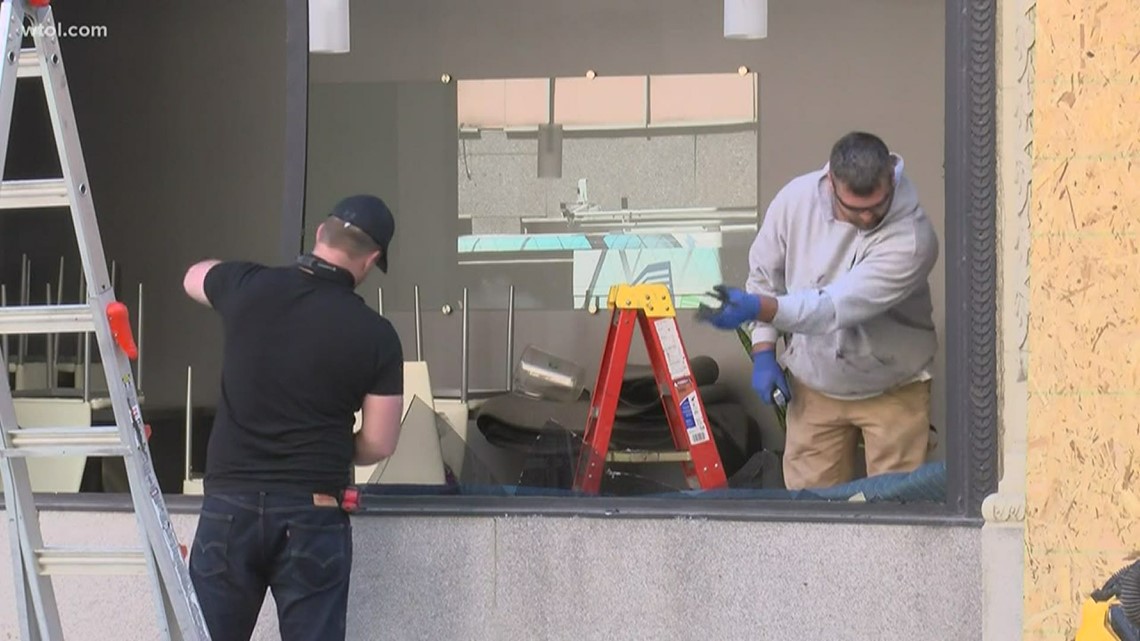
At 1:36 in the morning, the mayor texted Chief Kral: "Any updates on what's going on in the city right now? Is it quieting down at all?"
Early Sunday morning, the chief responded: "Morning, sir. We chased groups all night long, but as of this morning, we didn't have anything huge go down."
Pathway to Reconciliation Pathway to Reconciliation
When a city bleeds, it turns to its leaders for healing. And it demands accountability from those who lead.
Mayor Kapszukiewicz says he has heard those cries. Six months later, he is sitting in his One Government Center office. Many hold onto May 30 with bitterness. But the mayor, ever the optimist, looks forward and proudly points to the relative peace that has existed between police and citizens since that violent night.

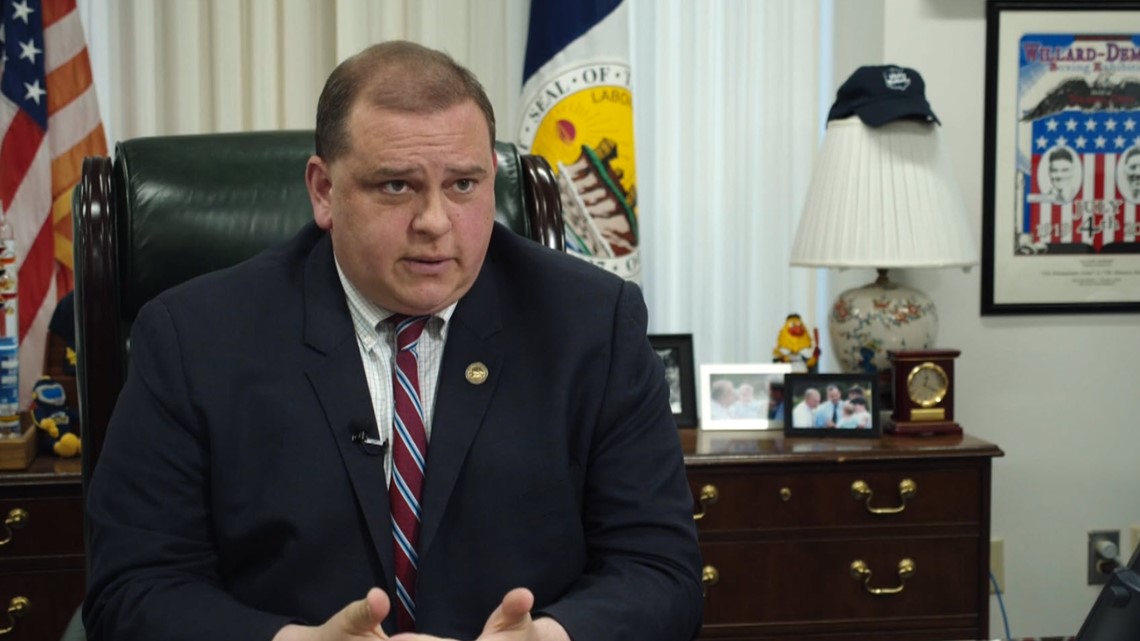
"That's a credit to the police department, the faith community, civil rights leaders, who all came together to talk about what we can do better," he says.
He has put together a community-police group of about 35 people who have been meeting for months on possible reforms. The group is expected to release a report in the new year, but the mayor highlights several reforms that have already happened.
- Moved Internal Affairs to a neutral site in One Government Center
- Eliminated camouflage uniforms for SWAT
- Opened up police academy training to public viewing
- Funded body cams for all Toledo police officers
- Passed Right to Know law, requiring officers to leave business cards with name and badge number during contact with community
- Banned use of chokeholds
The community group has a mix of residents, community leaders, and police officers.
"I will support any recommendation that they come out with - if it enjoys the consensus of the group."
What he understands is that the city can't ignore the rage of its citizens that boiled over that warm May night.
"Doesn't mean that we don't have underlying issues, but people in good faith have tried to come together to find solutions."


Others are more skeptical, including Julian Mack.
"While the temperatures may cool down, the issues are still here," he says. "We need accountability for those who have taken an oath to protect and serve the community."
There have been rumblings about lawsuits to be filed against the city, but, at this point, the only settlement paid by Toledo was $500 to a man whose front fender was damaged by a rubber projectile.
But the sins of May 30 don't fall only on one side.
"It was a tragedy what happened in Toledo. We don't want it to happen. We didn't want it to happen that day," Sergeant Okos says.
"The problem is that we got to a point where public safety, even if it looked bad for us, became a priority. And the way it had to be handled was by the actions that were taken that day."

